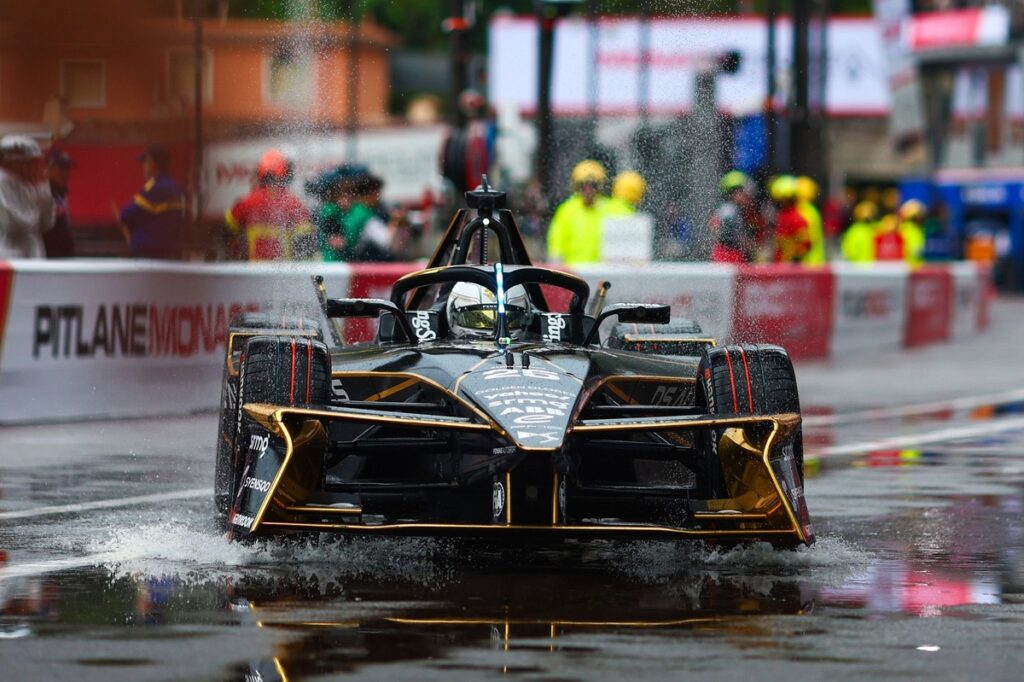Thanks to a deeply reworked DS E-TENSE FE25, the French driver emerged as one of the standout performers in a tense and thrilling Sunday showdown.
Following a lackluster first race, the DS Performance technical teams — supported by Stellantis Motorsport — worked overnight to significantly revise the setup of the DS Penske cars.
“There are no miracle fixes in Formula E, but we quickly identified areas where we could improve,” explained Jean-Marc Finot, Director of Stellantis Motorsport, who oversees DS Automobiles’ Formula E program. “We optimized the braking system, adjusted the stiffness of the rear suspension, and refined the suspension geometry. By combining these changes with historical circuit data analyzed through artificial intelligence, we built a competitive package.”
But on the 3.337 km and 19 corners of the Monaco street circuit, anything can happen — and Sunday, May 5 was a perfect example. After dominating dry practice sessions, the electric cars of Vergne and Maximilian Günther had to contend with heavy rain during qualifying. Despite that, their strong pace allowed both drivers to reach the quarter-finals, where they ended up facing each other in the semi-final. Unfortunately, both slid exiting the tunnel and were unable to legally take the chicane. As a result, their lap times were cancelled, and they started from the second row without reaching the final.
Vergne leads the charge
Jean-Eric Vergne, DS Penske
Photo by: DPPI
At 15:04, under steady rainfall, the lights went out. Both DS Penske drivers got off to a great start. Vergne quickly took the lead, commanding the race with poise despite the tricky conditions. Lap after lap, he built a solid gap — more than four seconds ahead of his closest rival. His strategy seemed to pay off, even though he had already used one of his two Attack Modes.
But unpredictability is the name of the game in Formula E. A race incident triggered a safety car, erasing Vergne’s hard-earned advantage. Oliver Rowland, who had conserved both Attack Modes and managed his energy with surgical precision, re-entered the fray. With the temporary all-wheel drive of the Gen3 EVO at his disposal, Rowland eventually overtook Vergne after a tense battle that involved several cars. It took multiple attempts and strategic plays before Rowland completed the move — and even then, the lead changed hands again in the final laps.
A Tactical Finale
The closing stages saw a strategic chess match unfold. With Attack Mode activations and varied energy strategies in play, the leaderboard constantly evolved. After leading a large portion of the race, Jean-Éric Vergne ultimately crossed the line in a respectable sixth place — short of his ambitions, but still a strong and commendable performance. Behind him, Maximilian Günther finished eighth, scoring additional points and confirming the team’s consistent level of performance.
Eyes on Tokyo
As the Formula E World Championship hits its halfway mark, DS Penske appears to be on the right trajectory. The lessons learned in Monaco could prove vital as the season heads to Tokyo, on May 17 and 18. With a brand-new track layout, a challenging time zone shift, and fresh obstacles to overcome, the Franco-American squad — the most decorated team in championship history — is eager to keep the momentum going.
In this article
Be the first to know and subscribe for real-time news email updates on these topics
Subscribe to news alerts
Read the full article here

